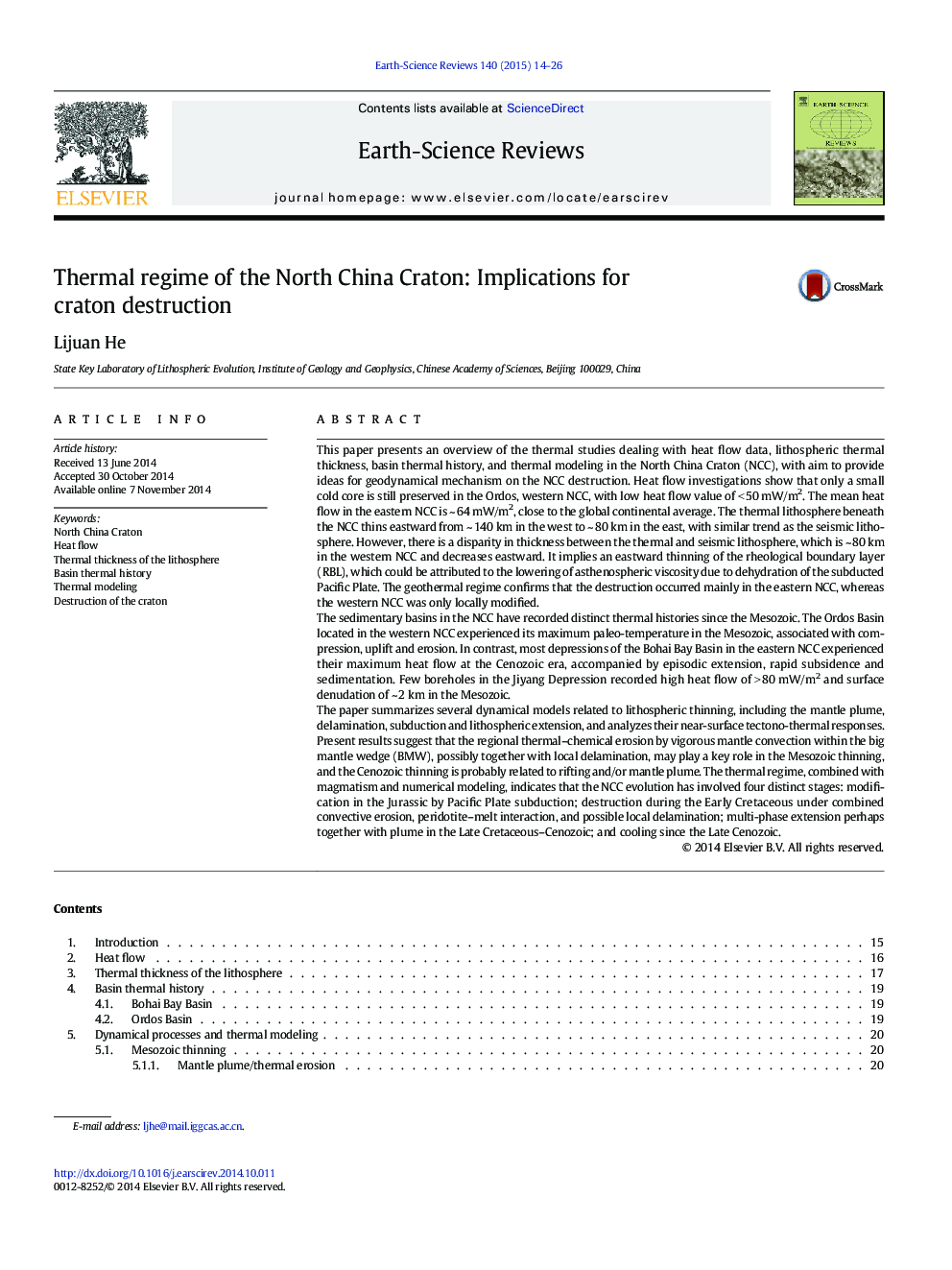| کد مقاله | کد نشریه | سال انتشار | مقاله انگلیسی | نسخه تمام متن |
|---|---|---|---|---|
| 4725657 | 1639962 | 2015 | 13 صفحه PDF | دانلود رایگان |

This paper presents an overview of the thermal studies dealing with heat flow data, lithospheric thermal thickness, basin thermal history, and thermal modeling in the North China Craton (NCC), with aim to provide ideas for geodynamical mechanism on the NCC destruction. Heat flow investigations show that only a small cold core is still preserved in the Ordos, western NCC, with low heat flow value of < 50 mW/m2. The mean heat flow in the eastern NCC is ~ 64 mW/m2, close to the global continental average. The thermal lithosphere beneath the NCC thins eastward from ~ 140 km in the west to ~ 80 km in the east, with similar trend as the seismic lithosphere. However, there is a disparity in thickness between the thermal and seismic lithosphere, which is ~ 80 km in the western NCC and decreases eastward. It implies an eastward thinning of the rheological boundary layer (RBL), which could be attributed to the lowering of asthenospheric viscosity due to dehydration of the subducted Pacific Plate. The geothermal regime confirms that the destruction occurred mainly in the eastern NCC, whereas the western NCC was only locally modified.The sedimentary basins in the NCC have recorded distinct thermal histories since the Mesozoic. The Ordos Basin located in the western NCC experienced its maximum paleo-temperature in the Mesozoic, associated with compression, uplift and erosion. In contrast, most depressions of the Bohai Bay Basin in the eastern NCC experienced their maximum heat flow at the Cenozoic era, accompanied by episodic extension, rapid subsidence and sedimentation. Few boreholes in the Jiyang Depression recorded high heat flow of > 80 mW/m2 and surface denudation of ~ 2 km in the Mesozoic.The paper summarizes several dynamical models related to lithospheric thinning, including the mantle plume, delamination, subduction and lithospheric extension, and analyzes their near-surface tectono-thermal responses. Present results suggest that the regional thermal–chemical erosion by vigorous mantle convection within the big mantle wedge (BMW), possibly together with local delamination, may play a key role in the Mesozoic thinning, and the Cenozoic thinning is probably related to rifting and/or mantle plume. The thermal regime, combined with magmatism and numerical modeling, indicates that the NCC evolution has involved four distinct stages: modification in the Jurassic by Pacific Plate subduction; destruction during the Early Cretaceous under combined convective erosion, peridotite–melt interaction, and possible local delamination; multi-phase extension perhaps together with plume in the Late Cretaceous–Cenozoic; and cooling since the Late Cenozoic.
Journal: Earth-Science Reviews - Volume 140, January 2015, Pages 14–26